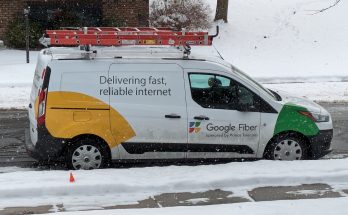California proposes strict energy usage limits on televisions
The California Energy Commission has proposed an arbitrary limit on television electricity usage. The limits would come in two stages, in 2011 and in 2013 bringing power usage down to 0.20 watts per square inch and 0.12 watts per square inch respectively. This would effectively ban plasma televisions, most rear-projection televisions, and some LCD displays.
The Consumer Electronics Association (CEA) recently released a report conducted in conjunction with Resolution Economics which showed the proposal would cost $50-million to California in state tax revenue loss, and 4,600 in lost jobs tied to TV sales.
If you’re not in California you should also be concerned. The Republic of California is the largest economy in the country, and sixth in the world. Most auto manufacturers in the USA build their cars to meet California’s stricter emission standards as a result, even though most states require much less. This could affect the future of home entertainment for the entire world.
Under this proposal, 83 percent of LCD televisions measuring 24-34 inches would be banned under the 2013 limitations, even though they currently meet or exceed Energy Star specifications. 80 percent of 35-39 inch LCDs, and 100 percent of plasma TVs over 60 inches would be banned under the 2011 limits.
The television industry has been working to increase energy efficiency without the pressure of government limitations, and without threats of limitations, bringing plasma televisions down considerably in just the last two years. It is possible the engineers at these firms would be able to make these goals in time, but there would more than likely be sacrifices in image quality to make it happen.
Clearly energy consumption needs to be curtailed, and televisions are estimated to use 10% of California’s energy usage, but I think the legislators need to work with the companies to develop plans that aren’t arbitrarily assigned.



RE ” I think the legislators need to work with the companies to develop plans that aren’t arbitrarily assigned”
Exactly…
Why energy efficiency regulation is not necessary:
1. The energy supply is there, and if it wasn’t, the resulting price rise would limit the energy use anyway. Any government that is nonetheless worried about energy use (like oil) can themselves simply increase the price of it by taxation.
2. Energy supply and security problems relate to the finite energy sources of oil coal gas, which happen to also be the main CO2 emitters, so their depletion and price rise just leads to replacement with non-emitting nuclear or renewable energy which is welcomed anyway.
(continued)
(continued)
Why energy efficiency regulation is not necessary:
3. If energy efficiency succeeds in reducing energy usage, it reduces the cost of oil, coal and gas, which either
• gives a bounceback effect increasing their use, their emissions, and their price, again
• makes a switch to renewable energy more uneconomical to make
4. The failings of emission trading and of allowance handout proposals, has increased the pressure to achieve emission reduction via efficiency regulation instead.
Two wrongs don’t make a right.
Any reduction of emissions needed is achieved by working directly with electricity and transport sectors (80% of emissions), limiting business disruption and cost to consumers, and letting them buy what they want.
5. Regulation involves product bans for consumption – not product safety – reasons.
Taxation is a superior instrument to lower consumption, raising government income as it does so, income that can fund emission reduction more than remaining product use causes it.
This is helped by inefficient products often being cheap and having relatively short life-spans, like light bulbs: Given 2 billion annual US light bulb sales, the income potential is clearly there, and would be accepted by the public as better than a ban.
However, taxation itself has disadvantages, similar to bans. Direct energy and emission measures remains the best course of action.
6. For consumers, energy efficiency is certainly an advantage that consumers should consider when buying products, but they can and should weigh that up against the advantages that inefficient products always have too – or they wouldn’t exist as choices on the market.
(more see http://ceolas.net/#cc2x )
7. Consumers pay for the energy they use. Their demand for energy is no better or worse than their demand for a loaf of bread or a nice shirt, given that the supply is there, and building a power station is therefore no better or worse than building another factory or shop.
We can live in caves and use candles.
We can also look positively at how to supply any energy that is needed, within any emission criteria that needs to be put on it.
8. There are several reasons why efficiency regulation does not give the energy and emission savings commonly suggested, including the simple reason, as shown by research, that consumers would not take care to save on what effectively becomes cheaper energy use.
(more: http://ceolas.net/#cc214x )